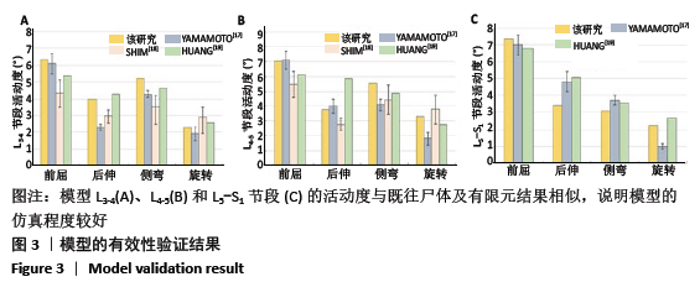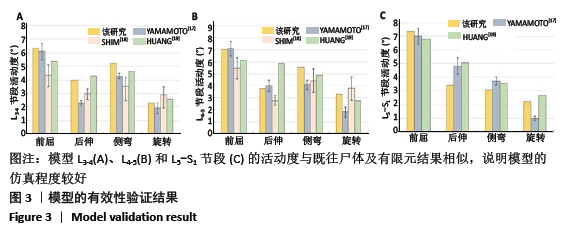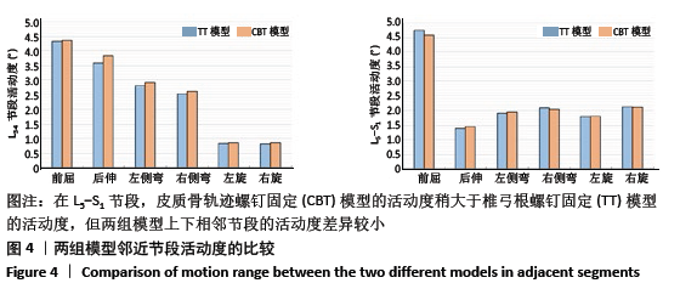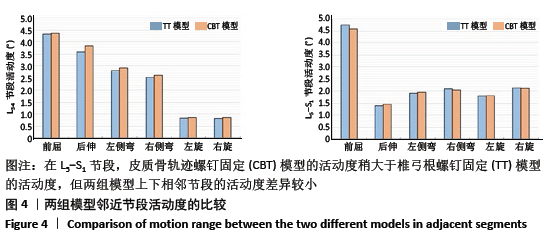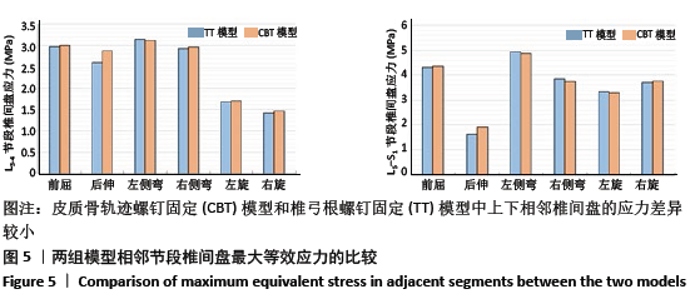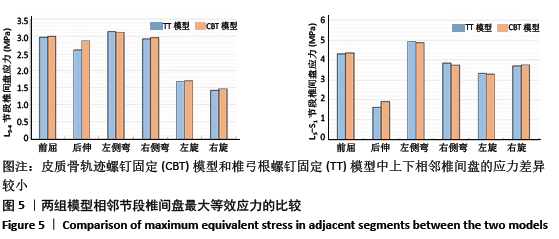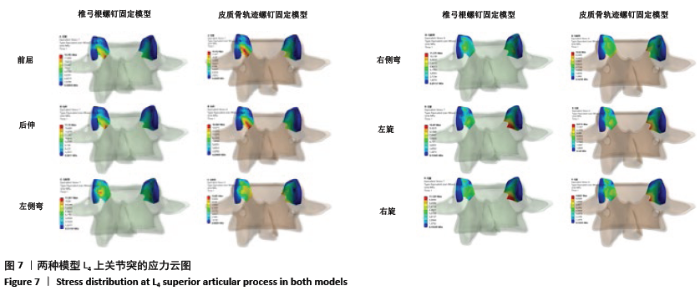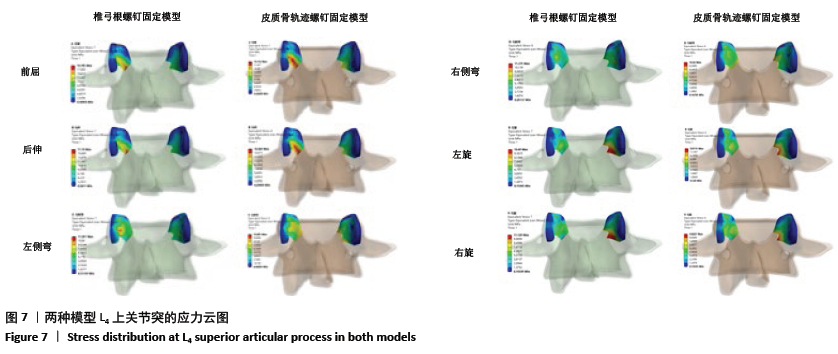[1] ROSINSKI A, ODEH K, UNGUREAN V JR, et al. Non-Pedicular Fixation Techniques for the Treatment of Spinal Deformity: A Systematic Review. JBJS Rev. 2020;8:e0150.
[2] WANG J, HE X, SUN T. Comparative clinical efficacy and safety of cortical bone trajectory screw fixation and traditional pedicle screw fixation in posterior lumbar fusion: a systematic review and meta-analysis. Eur Spine J. 2019;28(7):1678-1689.
[3] TARAWNEH AM, SALEM KM. A Systematic Review and Meta-analysis of Randomized Controlled Trials Comparing the Accuracy and Clinical Outcome of Pedicle Screw Placement Using Robot-Assisted Technology and Conventional Freehand Technique. Global Spine J. 2020:2192568220927713.
[4] 袁磊,陈仲强,曾岩,等. 胸腰椎椎弓根螺钉内固定术后螺钉松动的研究进展[J]. 中国脊柱脊髓杂志,2017,27(8):756-762.
[5] SANTONI BG, HYNES RA, MCGILVRAY KC, et al. Cortical bone trajectory for lumbar pedicle screws. Spine J. 2009;9:366-373.
[6] 童金玉,李新华,晏美俊,等. 椎弓根皮质骨轨迹螺钉技术的研究进展[J]. 中国矫形外科杂志,2019,27(2):159-164.
[7] MATSUKAWA K, YATO Y, HYNES RA, et al. Cortical Bone Trajectory for Thoracic Pedicle Screws: A Technical Note. Clin Spine Surg. 2017;30: E497-E504.
[8] WANG J, HE X, SUN T. Comparative clinical efficacy and safety of cortical bone trajectory screw fixation and traditional pedicle screw fixation in posterior lumbar fusion: a systematic review and meta-analysis. Eur Spine J. 2019;28:1678-1689.
[9] MARENGO N, MATSUKAWA K, MONTICELLI M, et al. Cortical Bone Trajectory Screw Placement Accuracy with a Patient-Matched 3-Dimensional Printed Guide in Lumbar Spinal Surgery: A Clinical Study. World Neurosurg. 2019;130:e98-e104.
[10] XU H, JU W, XU N, et al. Biomechanical comparison of transforaminal lumbar interbody fusion with 1 or 2 cages by finite-element analysis. Neurosurgery. 2013;73(2 Suppl Operative):on s198-205; discussion on s205.
[11] 闫家智,吴志宏,汪学松,等. 腰椎三维有限元模型建立和应力分析[J]. 中华医学杂志, 2009,89(17):1162-1165.
[12] 郭惠智,梁德,张顺聪,等. 腰椎单/双节段骨水泥强化椎弓根螺钉固定对邻近节段影响的有限元分析[J]. 中国脊柱脊髓杂志, 2020,30(2):159-166.
[13] SAKAURA H, MIWA T, YAMASHITA T, et al. Cortical bone trajectory screw fixation versus traditional pedicle screw fixation for 2-level posterior lumbar interbody fusion: comparison of surgical outcomes for 2-level degenerative lumbar spondylolisthesis. J Neurosurg Spine. 2018;28: 57-62.
[14] 费琦,赵凡,杨雍,等. 腰椎后路融合手术对失稳模型节段稳定性及相邻节段力学的影响[J]. 中华医学杂志,2015,95(45):3681-3686.
[15] YIWEI Z, SUOMAO Y, YONGHAO T, et al. Risk Factors Related to Superior Facet Joint Violation During Lumbar Percutaneous Pedicle Screw Placement in Minimally Invasive Transforaminal Lumbar Interbody Fusion (MIS-TLIF). World Neurosurg. 2020;139:e716-e723.
[16] LU T, LU Y. Comparison of Biomechanical Performance Among Posterolateral Fusion and Transforaminal, Extreme, and Oblique Lumbar Interbody Fusion: A Finite Element Analysis. World Neurosurg. 2019;129:e890-e899.
[17] YAMAMOTO I, PANJABI MM, CRISCO T, et al. Three-dimensional movements of the whole lumbar spine and lumbosacral joint. Spine (Phila Pa 1976). 1989;14(11):1256-1260.
[18] SHIM CS, PARK SW, LEE SH, et al. Biomechanical evaluation of an interspinous stabilizing device, Locker. Spine (Phila Pa 1976). 2008;33:E820-E827.
[19] HUANG YP, DU CF, CHENG CK, et al. Preserving Posterior Complex Can Prevent Adjacent Segment Disease following Posterior Lumbar Interbody Fusion Surgeries: A Finite Element Analysis. PLoS One. 2016;11:1932-6203.
[20] 杨洋,王洋,叶晓健. 椎弓根皮质骨轨迹螺钉固定技术的研究进展[J]. 中国脊柱脊髓杂志,2015,25(7):659-662.
[21] BALUCH DA, PATEL AA, LULLO B, et al. Effect of physiological loads on cortical and traditional pedicle screw fixation. Spine (Phila Pa 1976). 2014;39:E1297-E1302.
[22] PHILLIPS FM, CARLSON GD, BOHLMAN HH, et al. Results of surgery for spinal stenosis adjacent to previous lumbar fusion. J Spinal Disord, 2000;13:432-437.
[23] 楚野,梁斌,曾佳兴,等. 腰椎退变性疾病融合术后邻近节段退变的研究进展[J]. 中国脊柱脊髓杂志 2014,24(2):175-178.
[24] GOH GS, TAY Y, YUE WM, et al. What Are the Patient-reported Outcomes, Complications, and Radiographic Results of Lumbar Fusion for Degenerative Spondylolisthesis in Patients Younger Than 50 Years?. Clin Orthop Relat Res. 2020;478:1880-1888.
[25] LIU CW, WANG LL, XU YK, et al. Traditional and cortical trajectory screws of static and dynamic lumbar fixation- a finite element study. BMC Musculoskelet Disord. 2020;21:463.
[26] AONO H, TAKENAKA S, TOBIMATSU H, et al. Adjacent-segment disease after L3-4 posterior lumbar interbody fusion: does L3-4 fusion have cranial adjacent-segment degeneration similar to that after L4-5 fusion? J Neurosurg Spine. 2020:1-6.
[27] MATSUKAWA K, KATO T, YATO Y, et al. Incidence and Risk Factors of Adjacent Cranial Facet Joint Violation Following Pedicle Screw Insertion Using Cortical Bone Trajectory Technique. Spine (Phila Pa 1976). 2016;41:E851-856.
[28] PARK P, GARTON HJ, GALA VC, et al. Adjacent segment disease after lumbar or lumbosacral fusion: review of the literature. Spine (Phila Pa 1976). 2004;29(17):1938-1944.
[29] SEARS WR, SERGIDES IG, KAZEMI N, et al. Incidence and prevalence of surgery at segments adjacent to a previous posterior lumbar arthrodesis. Spine J. 2011;11(1):11-20. |
